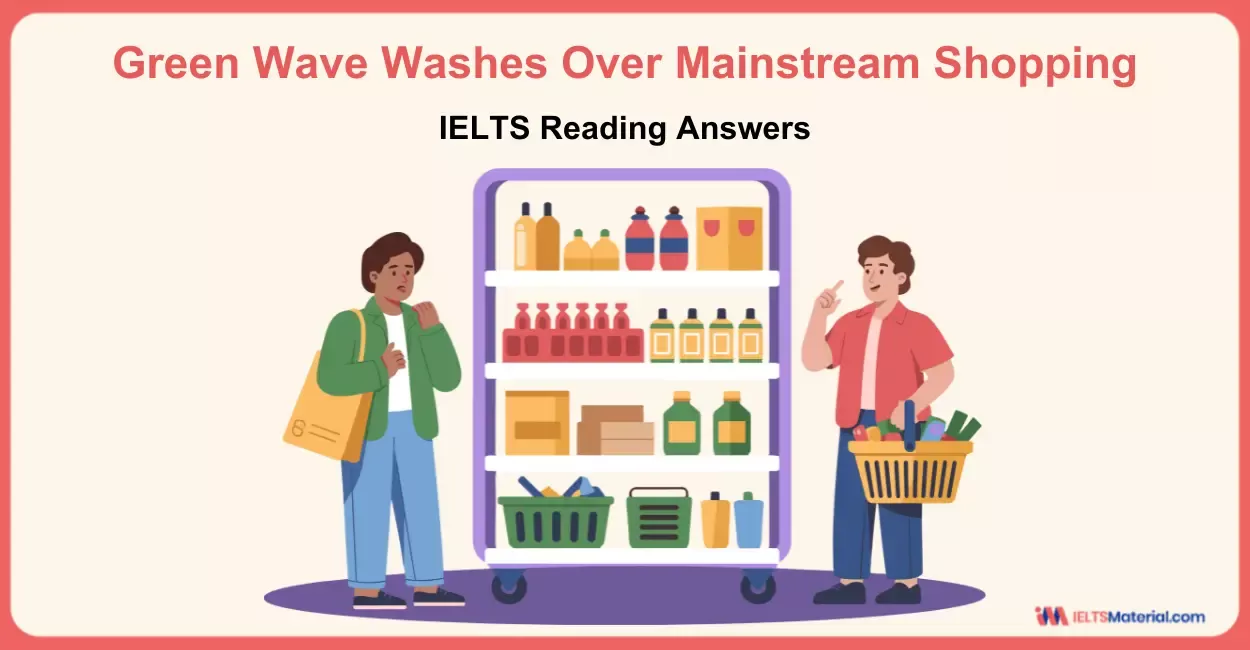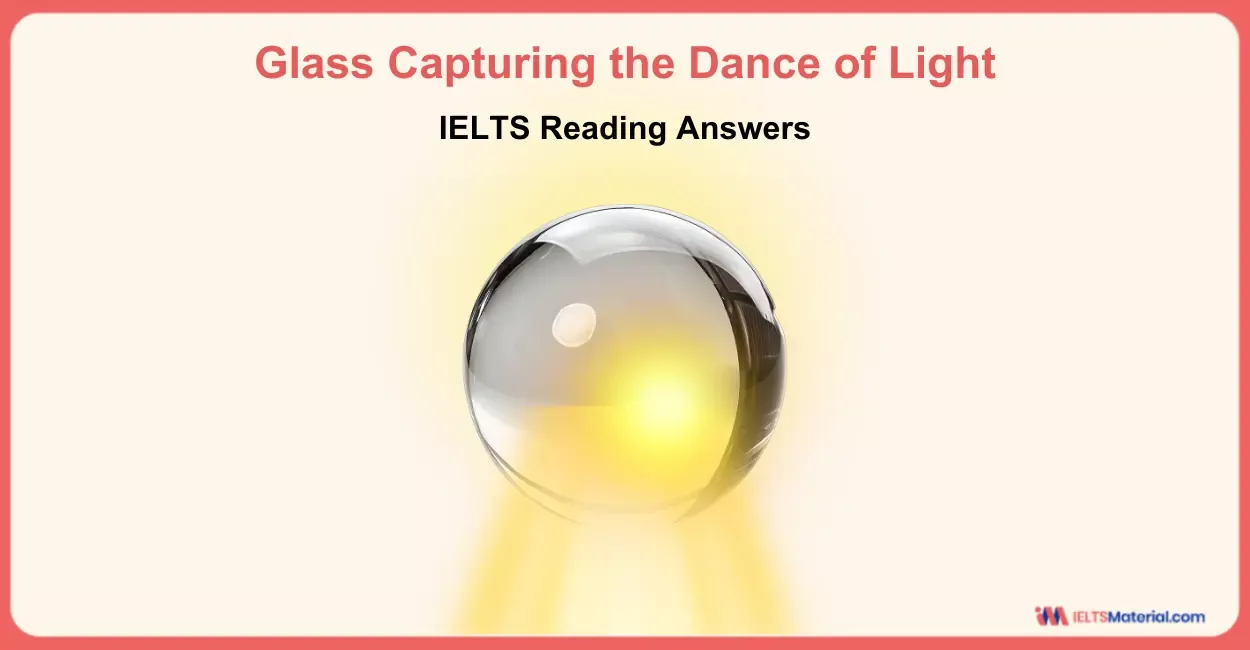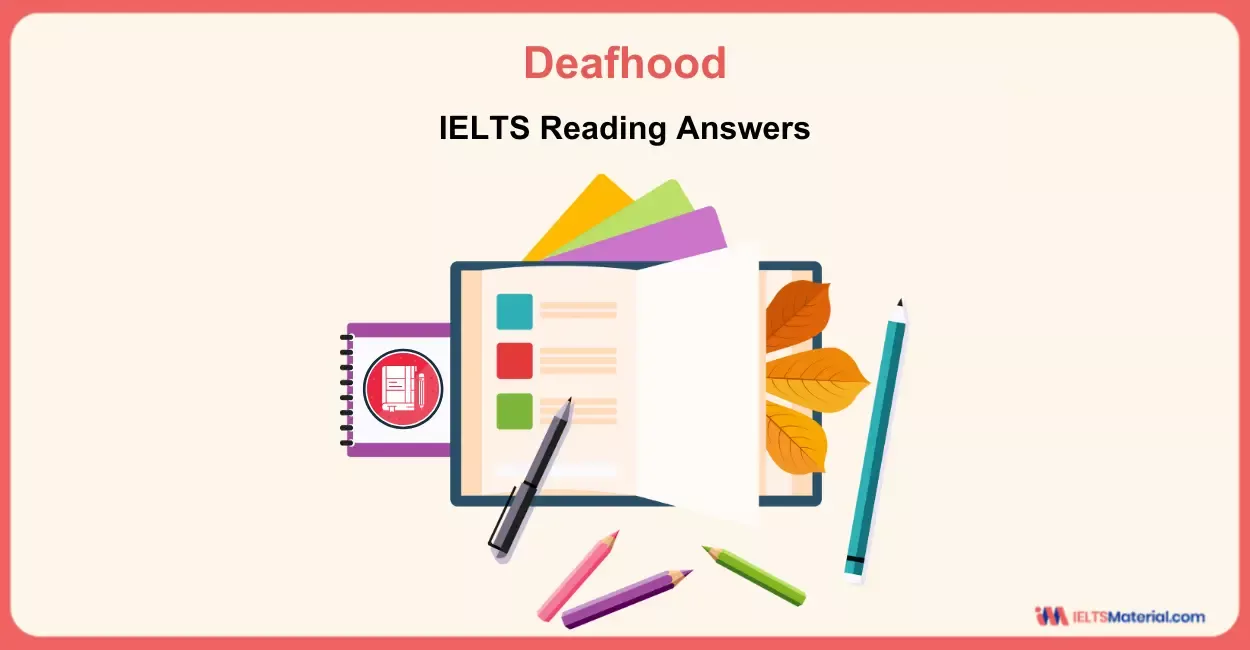Sugar And Other Sweeteners IELTS Reading Answers
6 min read
Updated On
-
Copy link
Want to score a band 8+ in the IELTS Reading Module? Prepare yourself with the topic on sugar and other sweeteners - IELTS reading answers, and get familiar with the strategies and the type of questions you might encounter in the IELTS exam!
Table of Contents

Limited-Time Offer : Access a FREE 10-Day IELTS Study Plan!
The IELTS Reading passage, Sugar And Other Sweeteners, along with the other two Academic passages – Literate Women Make Better Mothers? and Preface to ‘How The Other Half Thinks: Adventures In Mathematical Reasoning makes this a complete Reading practice test for you to practice!
You will have 60 minutes to complete the whole test, which consists of 40 questions in total.
Here are the question types in this reading test
Reading Passage 1 (Sugar And Other Sweeteners)
Reading Passage 2 (Literate Women Make Better Mothers?)
- Summary completion
- IELTS Yes/No or Not Given
- IELTS Reading Multiple Choice Questions
Reading Passage 3 (Preface to ‘How The Other Half Thinks: Adventures In Mathematical Reasoning)
Now why wait? Set your timer and take the test now!
Get set to book a FREE Demo to enhance your IELTS Reading skills now! Sign Up!
Reading Passage 1
You should spend about 20 minutes on Questions 1-15, which are based on the Reading Passage below. Find the practice test with the Sugar And Other Sweeteners PDF here.
Sugar And Other Sweeteners
Commercial Sweeteners. Relative to sucrose – base 1.0.
| Sweetener | Strength | Taste | When Discovered | |
| Sorbitol | 0.6 | Slightly oily | 1872 | France |
| Sucrose | 1.0 | Standard | Pre-400 BC | India |
| High Fructose Corn Syrup | 1.0 | Slight after-taste | 1960s | USA |
| Cyclamate | 30 | slickly | 1937 | USA |
| Aspartame (NutraSweet) | 200 | Close to sucrose but softer, thinner | 1965 | USA |
| Saccha | 300 | Slightly bitter after-taste | 1878 | Germany |
Questions 1-5
Refer to Reading Passage “Sugar and Other Sweeteners”, and look at Questions 1 – 5 below.
Write your answers in boxes 1-5 on your Answer Sheet.
The first one has been done for you as an example.
Example: What do the letters HFCS stand for?
Answer: ……High Fructose Corn Syrup……
1 & 2. There are TWO naturally occurring sugar substances mentioned in the article other than sucrose. What are they?
3. What does the food industry consider to be the perfect sweetener?
4. & 5. Name the TWO most recent artificial sweeteners listed in the Figure
Questions 6-15
The following paragraphs summarise the reading passage. Choose the ONE most appropriate word from the box below the paragraphs to complete each blank space.
Write your answers in boxes 6- 15 on your answer sheet.
The first one has been done for you as an example.
NB. NO WORD CAN BE USED MORE THAN ONCE.
Sugar tastes sweet because of thousands of receptors on the tongue which connect the substance with the brain. The taste of sweetness is universally ……(Ex:) accepted…… as the most pleasurable known, although it is a ……(6)…… why a substance tastes sweet. ……(7)….. is the most naturally occurring sugar, sources of which include ……(8)…… and honey. Sucrose, which supplies ……(9)…… to the body, is extracted from the sugar-cane plant, and white sugar (pure sucrose) is used by food ……(10)…… to measure sweetness in other ……(11)…… . Approximately a dozen artificial sweeteners have been ……(12)……; one of the earliest was Sorbitol from France.
Manufacturers often add large amounts of sugar to foodstuffs but never more than the ……(13)…… required to produce the optimum pleasurable taste. Surprisingly, this amount is ……(14)…… for different people and in different cultures. No-one has yet discovered a way to predict whether a substance will taste sweet, and it was by chance alone that all the man-made ……(15)…… sweeteners were found to be sweet.
| Glucose | Sweetened | Different | Technology | Fructose |
| Mystery | Aritifically | Technologists | Maximum | Commonly |
| Chemical | Best | Substances | Discovered | Accepted |
| Fruit | Chemist | Similar |
Answers
Unlock Answer
Signup/Login and get access to the answers
1. & 2. fructose, glucose [ in either order]
3. white sugar/ sucrose.
4. & 5. Aspartame (NutraSweet), Cyclamate.
6. mystery
7. fructose
8. fruit
9. glucose
10. technologists
11. substances
12. discovered
13. maximum
14. similar
15. chemical
Also check:
- IELTS Reading tips
- True False Not Given IELTS Reading
- IELTS Reading recent actual test
- IELTS past paper pdf
Reading Passage 2
You should spend about 20 minutes on Questions 16-28, which are based on the Reading Passage below. Find the practice test with the Literate Women Make Better Mothers? PDF here.
Literate Women Make Better Mothers?
Questions 16-20
Complete the summary using the list of words, A-J, below.
Write the correct letters, A-J, in boxes 16-20 on your answer sheet.
NB You may use any letter more than once.
The Nicaraguan National Literacy Crusade aimed to teach large numbers of illiterate 16 ……………… to read and write. Public health experts have known for many years that there is a connection between child health and 17……………… However, it has not previously been known whether these two factors were directly linked or not. This question has been investigated by 18………………. in Nicaragua. As a result, factors such as 19 …………………. and attitudes to children have been eliminated, audit has been shown that 20……………. can in itself improve infant health and survival.
A child literacy
B men and women
C an international research team
D medical care
E mortality
F maternal literacy
G adults and children
H paternal literacy
I a National Literacy Crusade
J family wealth
Questions 21-26
Do the following statements agree with the claims of the writer in Reading Passage 2?
In boxes 21-26 on your answer sheet, write:
YES if the statement agrees with the claims of the writer
NO if the statement contradicts the claims of the writer
NOT GIVEN if it is impossible to say what the writer thinks about this
21. About a thousand or the women interviewed by the researchers had learnt to read they were children.
22. Before the National Literacy Crusade, illiterate women had approximately the same levels of infant mortality as those who had learnt to read in primary school.
23. Before and after the National Literacy Crusade, the child mortality rate for the illiterate women stayed at about 110 deaths for each thousand live births.
24. The women who had learnt to read through the National Literacy Crusade showed the greatest change in infant mortality levels.
25. The women who had learnt to read through the National Literacy Crusade had the lowest rates of child mortality.
26. After the National Literacy Crusade, the children of the women who remained illiterate were found to be severely malnourished.
Questions 27 and 28
Choose TWO letters, A-E
Write the correct letters in boxes 25 and 26 on your answer sheet
Which TWO important implications drawn from the Nicaraguan study are mentioned by the writer of the passage?
A. It is better to educate mature women than young girls
B. Similar campaigns in other countries would be equally successful.
C. The effects of maternal literacy programmes can be seen very quickly
D. Improving child health can quickly affect a country’s economy.
E. Money spent on female education will improve child health.
Answers
Unlock Answer
Signup/Login and get access to the answers
16. B
17. F
18. C
19. J
20. F
21. NOT GIVEN
22. NO
23. YES
24. YES
25. NO
26. NOT GIVEN
27. C
28. E
Reading Passage 3
You should spend about 20 minutes on Questions 29-40, which are based on the Reading Passage below. Find the practice test with the Adventures In Mathematical Reasoning PDF here.
Preface to ‘How The Other Half Thinks: Adventures In Mathematical Reasoning’
Questions 29-34
Reading Passage 3 has seven sections, A-G. Which section contains the following information?
Write the correct letter, A— G, in boxes 29 — 34 on your answer sheet.
NB. You may use any letter more than once.
29. personal examples of being helped by mathematics
30. examples of people who each had abilities that seemed incompatible
31. mention of different focuses of books about mathematics
32. a contrast between reading this book and reading other kinds of publication
33. a claim that the whole of the book is accessible to everybody
34. a reference to different categories of intended readers of this book
Questions 35-40
Complete the sentences below. Choose ONE WORD ONLY from the passage for each answer.
Write your answers in boxes 35- 40 on your answer sheet.
35. Some areas of both music and mathematics are suitable for someone who is a ………………..
36. It is sometimes possible to understand advanced mathematics using no more than a limited knowledge of ………………..
37. The writer intends to show that mathematics requires ……………….. thinking, as well as analytical skills.
38. Some books written by ……………….. have had to leave out the mathematics that is central to their theories.
39. The writer advises non-mathematical readers to perform ……………….. while reading
40. A lawyer found that studying ……………….. helped even more than other areas of mathematics in the study of law.
Preface to ‘How The Other Half Thinks: Adventures In Mathematical Reasoning’ Reading Answers (Passage 3)
Answers
Unlock Answer
Signup/Login and get access to the answers
29. G
30. C
31. B
32. E
33. A
34. F
35. beginner
36. arithmetic
37. intuitive
38. scientists
39. experiments
40. theorems
Continue with…Practice Test 70
Practice IELTS Reading based on question types

Start Preparing for IELTS: Get Your 10-Day Study Plan Today!
Explore other Reading Practice Tests

Nehasri Ravishenbagam

Nehasri Ravishenbagam

Kasturika Samanta

Kasturika Samanta
Recent Articles

Nehasri Ravishenbagam

Haniya Yashfeen

Haniya Yashfeen

Haniya Yashfeen



Post your Comments
1 Comment